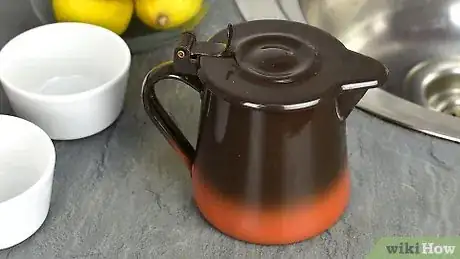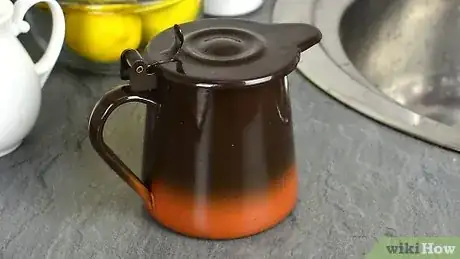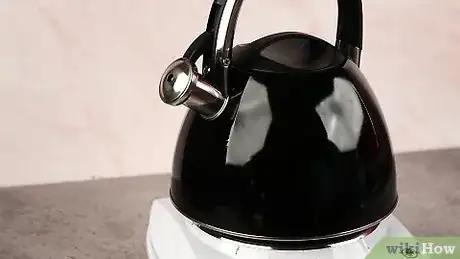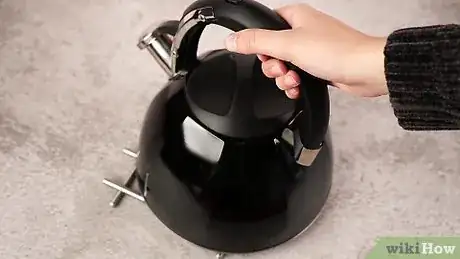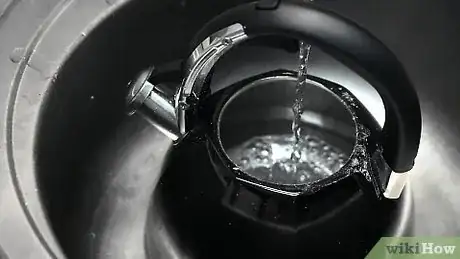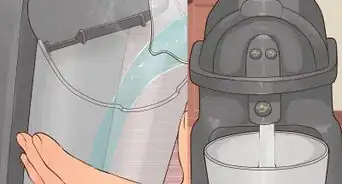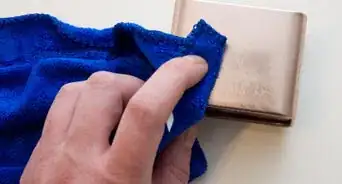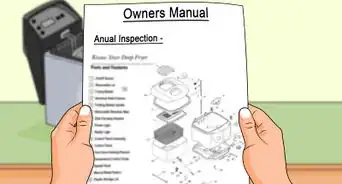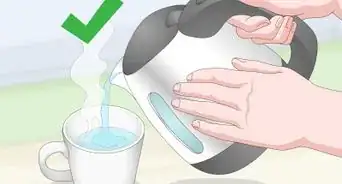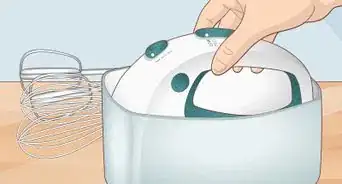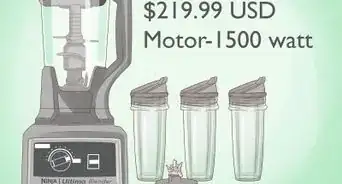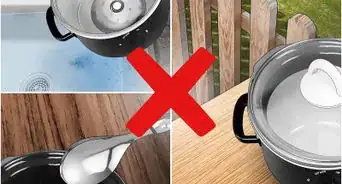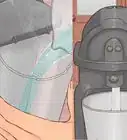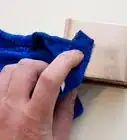This article was co-authored by Susan Stocker and by wikiHow staff writer, Hunter Rising. Susan Stocker runs and owns Susan’s Green Cleaning, the #1 Green Cleaning Company in Seattle. She is well known in the region for outstanding customer service protocols — winning the 2017 Better Business Torch Award for Ethics & Integrity —and her energetic support of green cleaning practices.
There are 15 references cited in this article, which can be found at the bottom of the page.
wikiHow marks an article as reader-approved once it receives enough positive feedback. In this case, several readers have written to tell us that this article was helpful to them, earning it our reader-approved status.
This article has been viewed 984,659 times.
If you love brewing a cup of tea or coffee during the day, you’ve probably seen the crusty white limescale build up inside your kettle. Even though limescale isn’t harmful, it can be unsightly or give your drink a slightly metallic flavor. Luckily, you can easily descale your kettle with some common products you probably already have at home. Keep reading and we’ll walk you through the best ways to clean your kettle to ensure it looks and works properly.
Things You Should Know
- To descale a kettle with vinegar, boil equal parts white vinegar and water in the kettle. Let the solution soak for 1 hour before rinsing it out.
- To use lemons, squeeze half a lemon into a kettle half full with water. Boil the lemon water, let it cool, and wipe out any limescale deposits.
- For descaling with baking soda, add 1 tablespoon (14.4 g) to a half-full kettle of water. Boil the water, let it sit for 30 minutes, and rinse your kettle out.
Steps
Vinegar
-
1Fill your kettle half-full with equal parts vinegar and water. Distilled white vinegar works best as a natural descaler for your tea kettle. Pour the water and vinegar directly into your kettle and swish it around so it’s thoroughly mixed.[1]
- Alternatively, you can make a cleaning solution by mixing lemon and vinegar. Lemon reduces the odor of the vinegar.
- Fill a quart-sized glass jar with lemon rinds. Cover with white vinegar. Let it sit for 1 to 2 weeks.
- Strain the lemon rinds out using a cheesecloth or strainer into a glass spray bottle. If you want a weaker cleaning solution, add filtered water to the product after straining.
- If you’re cleaning an electric kettle, make sure it's unplugged before pouring in the water and vinegar.
- If your kettle has a filter near the spout, pull it out before cleaning it. If there’s limescale stuck on the filter, put it in a small bowl with equal parts vinegar and water.
- Check the owner's manual for your kettle to make sure that it's safe to add vinegar to the interior. Vinegar may be too harsh of a cleaner for some electric kettles.
-
2Put the kettle over heat and boil the solution. Plug in an electric kettle, or turn on the stove to warm up a traditional kettle. Heat the solution up until it comes to a rolling boil for about a minute.[2]
- Feel free to use a high heat setting to bring the solution to a boil as quickly as possible. It shouldn't take longer than 5 minutes to get it boiling.
- Turn on an exhaust fan or open a window since the vinegar will create a pungent odor once it starts boiling.
- If yours is an electric kettle with an automatic switch-off feature, listen for it to turn off on its own instead of watching to see when it boils.
Advertisement -
3Turn off the heat and let the solution sit for 1 hour. Stop heating the kettle and set it aside so it has time to soak with the vinegar solution. The heat and the acidity from the vinegar will help loosen up all of the limescale deposits in your kettle so they’re easy to remove.[3]
-
4Rinse the vinegar solution out with cold water. Be sure the kettle is cool to the touch before you handle it. Thoroughly rinse the inside of the kettle under your sink faucet to get rid of any leftover vinegar solution and loose limescale. For best results, rinse out the kettle 2 or 3 times to get as much of the vinegar out of the inside as possible.[4]
- If your kettle has a removable lid, take this lid off to make it easier to rinse out the interior. You can rinse the lid by itself to make sure it's also clean.
-
5Use a clean, damp cloth to wipe away any leftover limescale. Even if the vinegar didn’t break down all of the limescale, any build-up still inside your kettle will be easy to remove by hand. Rub the insides with a damp cloth to scrub the loose residue from the kettle. Be sure to scrub around all of the edges and corners of the kettle to descale it.[5]
- If a damp cloth isn't cutting it, add a sprinkle of baking soda to a damp sponge and use that to clean out the inside of the kettle.
- If there’s still stubborn limescale stuck inside your kettle, then boil more vinegar and water solution to break it apart. You may need to run vinegar through your kettle a few times if it’s really dirty.
-
6Boil plain water to get rid of any lingering vinegar taste. Fill your kettle halfway with plain water and bring it to a boil. Pour this water out once it starts to boil. Repeat this cycle until you can't smell any vinegary odor in your kettle.[6]
- You can also “test” your kettle by preparing a beverage in it and seeing if it tastes at all like vinegar.
Lemon
-
1Squeeze half a lemon into 1 cup (240 mL) of water. Cut a medium-sized lemon in half and juice it into a bowl. Then, add in your water and stir it together so the solution is thoroughly combined.[7]
- Alternatively, cut the lemon into small slices and toss them all in the water.[8]
- If you don’t have a lemon, you can use 1⁄4 cup (59 ml) of store-bought lemon juice instead.[9]
- Check the manufacturer's instructions for your particular kettle to make sure it's safe to add lemon juice or pieces of lemon inside.
-
2Boil the lemon and water solution in your kettle. Pour the solution into your kettle to fill it halfway. Turn on the stove to high heat or plug in an electric kettle to heat up the lemon water. Let the solution come to a rolling boil for about a minute.[10]
-
3Turn off the kettle and leave the solution to sit for an hour. Unplug your kettle or remove it from heat and set it aside on a cool surface to soak. You’ll break apart more limescale if you leave the solution in your kettle for an hour, but at least 30 minutes is okay if you're pressed for time.[11]
- Lemons contain citric acid that breaks apart stubborn limescale. Letting the solution soak will give it enough time to descale your kettle and cool down.
-
4Rinse and wipe residue out of the kettle. Check that the kettle is cool to the touch before handling it. Then, just rinse the kettle in your sink to remove any lemon water and limescale residue before continuing. Give the kettle about 4–5 rinses to completely clean it out. Rub the inside with a damp cleaning cloth to break apart any stubborn limescale.[12]
- If you have an electric kettle, avoid submerging it completely. Just rinse out the inside so you don’t damage any of the electrical components.
-
5Heat plain water in your kettle to remove residual limescale and lemon flavors. Fill your kettle halfway with water and bring it to a boil. Remove your kettle from heat and pour out the water when you’re finished.[13]
- You may need to repeat this cycle several times to completely remove any leftover limescale or lemony odor inside your kettle.
Baking Soda
-
1Add water and 1 tablespoon (14.4 g) of baking soda to your kettle. Fill your kettle about halfway full with water to cover the limescale on the surface. Scoop your baking soda into the kettle and stir it until it completely dissolves in the water.[14]
- Baking soda is a natural cleaner and disinfectant so it works as a natural kettle descaler.
- Baking soda is usually safe to use in most kettles, but check your instruction manual to be sure.
-
2Heat the kettle until the water boils for 1 minute. Turn your kettle on if it’s electric; otherwise, put it over high heat on your stove. Wait until the water comes to a rolling boil, and leave it over heat for about a minute.[15]
-
3Remove the kettle from heat and let it sit for 30 minutes. Unplug your kettle or take it off the burner so it has a chance to cool down. As the baking soda sits in your kettle, it will loosen the limescale so it rinses out easily.[16]
- You can leave the solution to soak inside your kettle for up to an hour to help break apart even more of the limescale.
-
4Rinse the baking soda solution and limescale out of your kettle. When the kettle feels cool to the touch, pour the baking soda solution down your sink drain. Run clean, cool water from your faucet through your kettle to get rid of any residual baking soda or limescale deposits that are still stuck inside.[17]
- Rinse your kettle 2–3 times to ensure you get as much of the limescale out as you can.
-
5Scrub stubborn limescale with a baking soda paste and toothbrush. For severe limescale buildup, mix baking soda with a little bit of water until it forms a thick paste. Dip the bristles of an old toothbrush in the paste and scrub it onto the limescale until it comes off. Then, just rinse the solution out with clean water.[18]
- You may need to try scrubbing the limescale multiple times if it doesn’t come off after the first try.
How Should You Clean A Copper Kettle?
Expert Q&A
-
QuestionHow do you descale a kettle with Coke?
 Kadi DuludeKadi Dulude is a House Cleaning Professional and the Owner of Wizard of Homes, a New York City-based cleaning company. Kadi has over 10 years of experience and manages a team of over 90 registered cleaning professionals. Her cleaning advice has been featured in Architectural Digest and New York Magazine.
Kadi DuludeKadi Dulude is a House Cleaning Professional and the Owner of Wizard of Homes, a New York City-based cleaning company. Kadi has over 10 years of experience and manages a team of over 90 registered cleaning professionals. Her cleaning advice has been featured in Architectural Digest and New York Magazine.
House Cleaning Professional Set your kettle to boil with Coke in it. Leave your kettle and the boiled Coca-Cola to cool down for about 45 minutes. Then rinse the Coke out and wash the kettle as usual.
Set your kettle to boil with Coke in it. Leave your kettle and the boiled Coca-Cola to cool down for about 45 minutes. Then rinse the Coke out and wash the kettle as usual. -
QuestionCan I use lemon juice or does it have to be fresh lemons?
 Community AnswerYou can use either, but fresh is better because there is more acid in the juice.
Community AnswerYou can use either, but fresh is better because there is more acid in the juice. -
QuestionWill bicarbonate of soda or baking powder alone dissolve limescale? Do I need to mix lemon juice or vinegar with the bicarbonate of soda?
 Community AnswerLimescale dissolves in acids such as citric acid (lemons) or acetic acid (vinegar), not in alkalis such as bicarbonate of soda or baking powder. Mixing lemon juice or vinegar with bicarb will neutralize the acid, so that won't work.
Community AnswerLimescale dissolves in acids such as citric acid (lemons) or acetic acid (vinegar), not in alkalis such as bicarbonate of soda or baking powder. Mixing lemon juice or vinegar with bicarb will neutralize the acid, so that won't work.
Things You’ll Need
Vinegar
Lemon
- 1 lemon or lemon juice
- Microfiber cleaning cloth
Baking Soda
- Baking soda
- Old toothbrush
References
- ↑ https://youtu.be/IlkAXSlQNNg?t=74
- ↑ https://www.thekitchn.com/how-to-clean-an-electric-kettle-248372
- ↑ https://www.cleanipedia.com/gb/kitchen-cleaning/clean-kettle.html
- ↑ https://www.thekitchn.com/how-to-clean-an-electric-kettle-248372
- ↑ https://youtu.be/Dsv6FjAjJHs?t=194
- ↑ https://www.thekitchn.com/how-to-clean-an-electric-kettle-248372
- ↑ https://youtu.be/dPRqjjB9kEA?t=77
- ↑ https://youtu.be/l7igqUoRkkA?t=30
- ↑ https://youtu.be/HaAGKSJSCn4?t=72
- ↑ https://youtu.be/HXeucoWn9mw?t=101
- ↑ https://youtu.be/L0KS_abFqhM?t=102
- ↑ https://youtu.be/8OZ6-p97oyk?t=41
- ↑ https://youtu.be/l7igqUoRkkA?t=107
- ↑ https://youtu.be/0u8kkvIMFZ8?t=25
- ↑ https://www.cleanipedia.com/gb/kitchen-cleaning/clean-kettle.html
- ↑ https://www.cleanipedia.com/gb/kitchen-cleaning/clean-kettle.html
- ↑ https://youtu.be/0u8kkvIMFZ8?t=62
- ↑ https://youtu.be/L0KS_abFqhM?t=162
- ↑ https://www.oxo.com/media/wysiwyg/on_8717100_booklet.pdf
- ↑ https://www.cleanipedia.com/gb/kitchen-cleaning/clean-kettle.html
About This Article
To descale a kettle, fill it with a mixture of 1 part white vinegar and 1 part water. Leave the vinegar mixture in the kettle for 1 hour. Then, dump it out and wipe down the inside of the kettle with a clean rag. Once all the lime-scale is gone, rinse your kettle out with water 5 times, and voila. If you want to learn how to use lemons or limes to descale your kettle, keep reading!
